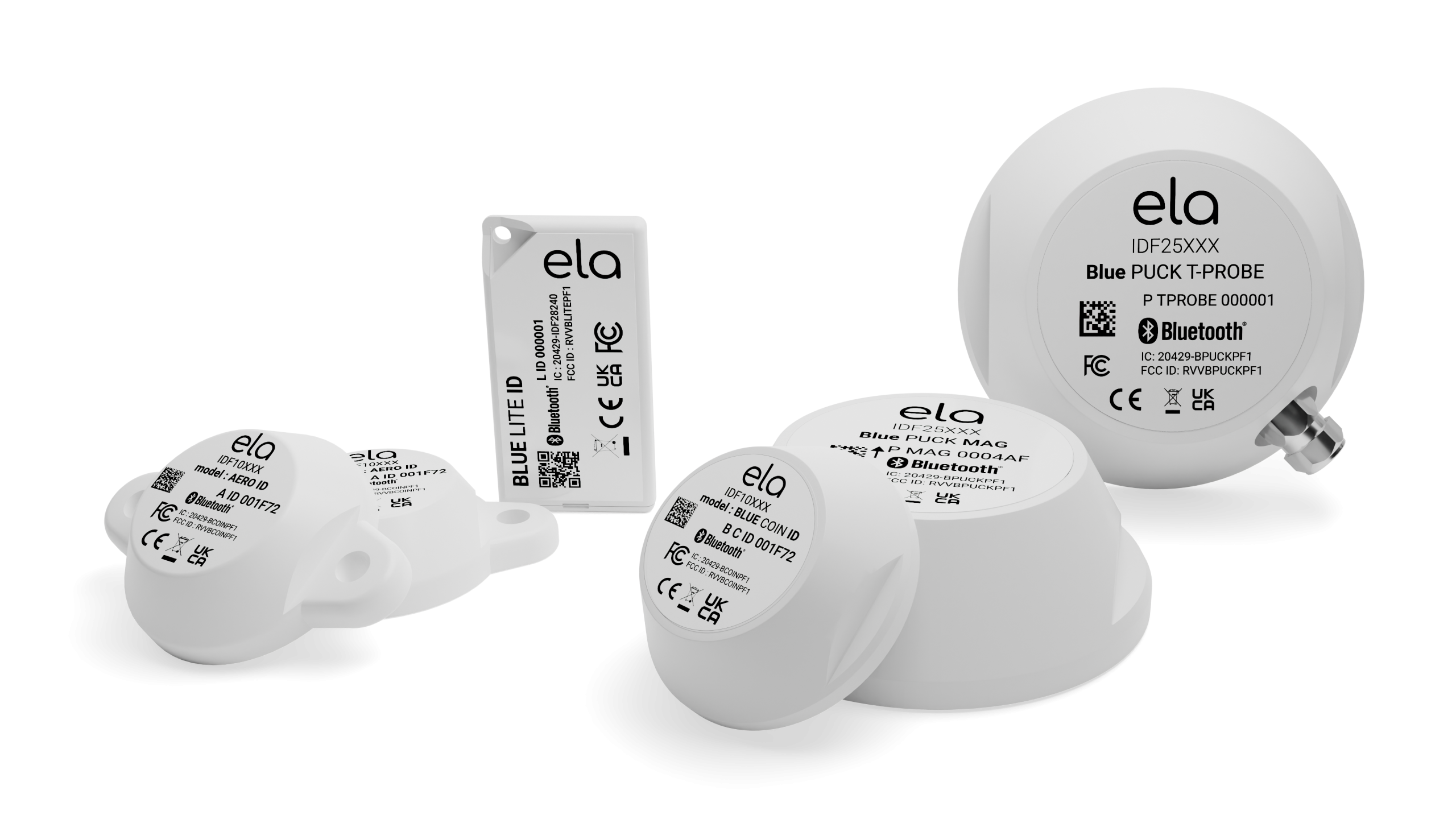A deep dive into BLE vs Wi-Fi: Unraveling the key differences
Reading time
Level

In a context where the Internet of Things is booming, the number of connected devices is increasing dramatically. Bluetooth Low Energy (BLE) and Wi-Fi are two wireless transmission technologies used to connect devices, but they are both very different.
BLE will enable devices to connect to each other and exchange data with minimum energy consumption via UHF radio waves, whereas Wi-Fi is most often used to connect Internet routers to devices.
What is BLE ?
Formerly know as Wibree, and now trademarked Bluetooth Smart, Bluetooth Low Energy is designed to enable low-energy data transmission over short distances. It is a wireless transmission technique created by Nokia in 2006 as an open standard based on Bluetooth. BLE is a version of the Bluetooth standard that has benn optimized to extend the lifespan of battery-powered devices, which is why it is referred to as “Low Energy”.
By reducing the activity time of connected objects, this technology will drastically extend their autonomy. Bluetooth Low Energy seems well-suited to industrial applications. It is widely used throughout the Internet of Things (IoT) ecosystem, as well as in other fields where reliable wireless connectivity is required.
What is Wi-Fi ?
Wi-Fi, short for “Wireless Fidelity”, enables electronic devices to connect to the Internet and communicate with each other over wireless local area networks. It is widely used in homes, businesses, public establishments and entertainment venues to provide wireless Internet access.
But we also find this technology in the IoT sector, as it is used to enable devices to connect to the Internet via routers. This includes sensors, security cameras, smart thermostats, tracking devices and more.
How does BLE work ?
Bluetooth Low Energy technology enables bidirectional data exchange using UHF radio waves, and operates in the ISM frequency range from 2.400 GHz to 2.483 GHz. 40 channels spaced 2 MHz apart are allocated to BLE to enable devices to communicate.
Advertising
BLE devices, also known as peripherals, periodically broadcast advertising messages. These messages announce the presence of the device and the services it offers. The advertisements may contain information such as the device’s MAC address, its name, service identifiers, etc.
Scanning
Bluetooth Smart devices wishing to connect to other devices, known as control centers, perform a scanning operation to detect advertisements from nearby devices. The central units listen to the advertising messages broadcast by the devices.
Connection Establishment
When a control unit identifies a Bluetooth device of interest, it can initiate a connection by sending a connection request to the device. The device can then respond to establish a connection.
Generic Attribute Profile
BLE communication is based on the GATT profile, which defines the structure of data exchanged between peripherals and control units. GATT uses attributes, called characteristics and services, to describe the data exchanged.
Services and Characteristics
Services describe the functionalities offered by the device, while features contain the specific data that devices can exchange. Control units can read, write, notify or request information about these features.
Energy management
One of the key features of Bluetooth Low Energy is its low power consumption. BLE devices are designed to operate with minimal power consumption by regularly entering standby mode. Periodic advertisements and sleep modes help to save energy, making them suitable for battery-powered devices.
Security
Bluetooth Smart incorporates security mechanisms to protect exchanged data. It supports data encryption and device authentication to ensure that sensitive information is not intercepted by unauthorized third parties.
Discover our range of Bluetooth beacons and industrial sensors

How does Wi-Fi work?
Wi-Fi emits radio waves, or more precisely electromagnetic waves. These waves are radiofrequency (RF) waves (generally at frequencies of 2.4 GHz or 5 GHz) in all directions. These waves carry data in the form of wireless signals.
Wi-Fi transceiver (Access Point)
To establish a Wi-Fi connection, you need at least two components: a Wi-Fi transceiver, commonly known as an access point (or Wi-Fi router), and one or more Wi-Fi client devices (e.g. computers, smartphones, tablets, printers, etc.).
Network configuration
The access point (Wi-Fi router) is configured to broadcast a wireless network with a name (SSID) and security, usually in the form of a security key (password).
Network detection by devices
Client devices, such as laptops or smartphones, detect the Wi-Fi networks available in their coverage area. The user can then choose to connect to a network by selecting its name (SSID) and entering the security key if required.
Establishing the connection
Once the client device selects a Wi-Fi network and provides the correct authentication information, it establishes a connection with the access point.
Data transmission
Once the connection has been established, data is transmitted between the client device and the access point via wireless data packets. This data can be of various kinds, such as web information, files, streaming video, etc.
Internet access
The access point is usually connected to an Internet Service Provider (ISP). So when client devices access the Internet via the Wi-Fi connection, data is routed between the access point and the ISP, which acts as a gateway to the Internet.
Security
Wi-Fi networks offer security options such as data encryption (usually WPA2 or WPA3) to protect the confidentiality of data transmitted over the network.
Traffic management
Wi-Fi routers manage traffic by assigning IP addresses to client devices and directing data packets to their appropriate destinations.
8 Advantages of Bluetooth Low Energy over Wi-Fi
1. Low energy consumption
As its name suggests, BLE is designed for low power consumption. This makes it ideal for battery-powered devices such as wearables, IoT sensors and medical devices.
2. Interoperability
Bluetooth Low Energy technology is an open communications standard, making it easily interoperable with a wide range of equipment on the market, such as GPS trackers, routers, smartphones, PCs, tablets, gateways, and so on.
3. Cross-platform support
Bluetooth Low Energy is compatible with most major operating systems (iOS, Android, Windows, etc.), making it easy to develop applications that run on different platforms.
4. Fast connection
Bluetooth Smart enables fast, efficient connections for transferring small amounts of data. This makes it suitable for applications such as device pairing, light file transfers and fast interactions.
5. Simple configuration
Setting up a BLE connection is generally simpler than setting up a Wi-Fi network. Bluetooth Low Energy devices can pair up quickly and exchange data without the need for a complex network infrastructure.
6. Indoor and outdoor use
Bluetooth low energy technology does not necessarily require a wired network infrastructure. It can therefore be used for both indoor and outdoor applications.
7. Reduced cost
BLE beacons and sensors are generally cheaper to manufacture than Wi-Fi chips, making them a cost-effective choice for many products. The cost of acquiring this technology is ultimately low, as it requires little wired infrastructure.
8. Less interference with other devices
Bluetooth Low Energy is designed to minimize interference with other devices operating on the same frequency. Compared to Wi-Fi, BLE has a shorter active interval, reducing the likelihood of signal overlap and interference. As a result, in environments where both BLE and Wi-Fi devices are present, BLE tends to cause less disturbance to other devices on the same spectrum.
However, it’s important to note that Bluetooth Low Energy is not a universal solution, and has its own limitations. For example, it is less suited to applications requiring high bandwidth or extended range. For these types of applications, Wi-Fi is often the preferred choice, due to its higher data transmission speed and greater range.
6 Advantages of Wi-Fi over BLE :
1. High data rate
Wi-Fi offers much higher bandwidth than BLE. This means it can support faster data transfers, making it ideal for applications requiring high data rates, such as video streaming, online gaming, file sharing and so on.
2. Extended scope
Wi-Fi has a longer range than BLE. It can cover longer distances, making it suitable for wireless LANs in homes, offices and sometimes outdoor spaces.
3. Versatility
Wi-Fi is a versatile communications technology capable of handling many simultaneous connections. It can be used for home, corporate and public networks, etc.
4. Established network infrastructure
Wi-Fi relies on well-established network infrastructures, which means that most places (homes, businesses, public places) already have a Wi-Fi infrastructure in place. This facilitates the integration of new devices and connectivity.
5. Compatibility
Most modern electronic devices support Wi-Fi as standard, which means it is widely compatible with a wide variety of devices.
6. Advanced security and management
Wi-Fi networks offer advanced security features, such as WPA2/WPA3 encryption, and enable more complex network management, which is essential for businesses and environments where security and device management are crucial.
However, it’s important to note that Wi-Fi also has drawbacks compared to BLE, including higher power consumption, increased complexity and a larger hardware footprint. In addition, Wi-Fi can be more expensive to implement for some IoT projects.
Bluetooth Low Energy vs Wi-Fi: which connectivity should you choose for your IoT development?
Ultimately, the choice between BLE and Wi-Fi for your IoT project will depend on the balance between power consumption, range, ease of configuration, cost, data transmission speed and other requirements specific to your application.
Wi-Fi is suitable for many IoT applications due to its high throughput, comprehensive Internet connectivity and existing infrastructure. It is ideal in professional environments such as offices, or in a domestic setting. However, it may not be the best option for projects requiring low power consumption, a wired network infrastructure or simple configuration. Indeed, depending on the environment (outdoors, for example), deployment of a wired infrastructure may be complicated or even impossible.
Bluetooth Smart, on the other hand, is an excellent choice for IoT projects requiring low power consumption, simple installation or connectivity with mobile devices. We can find this technology in use cases such as automatic tool inventory on construction sites, temperature monitoring in refrigerated transport, or identification of vehicle fleets and drivers, for example.
To sum up, although Wi-Fi remains an efficient and highly reliable protocol, its scope of application is all too limited. Bluetooth Low Energy remains the most suitable technology, given its low energy consumption and ease of use.






